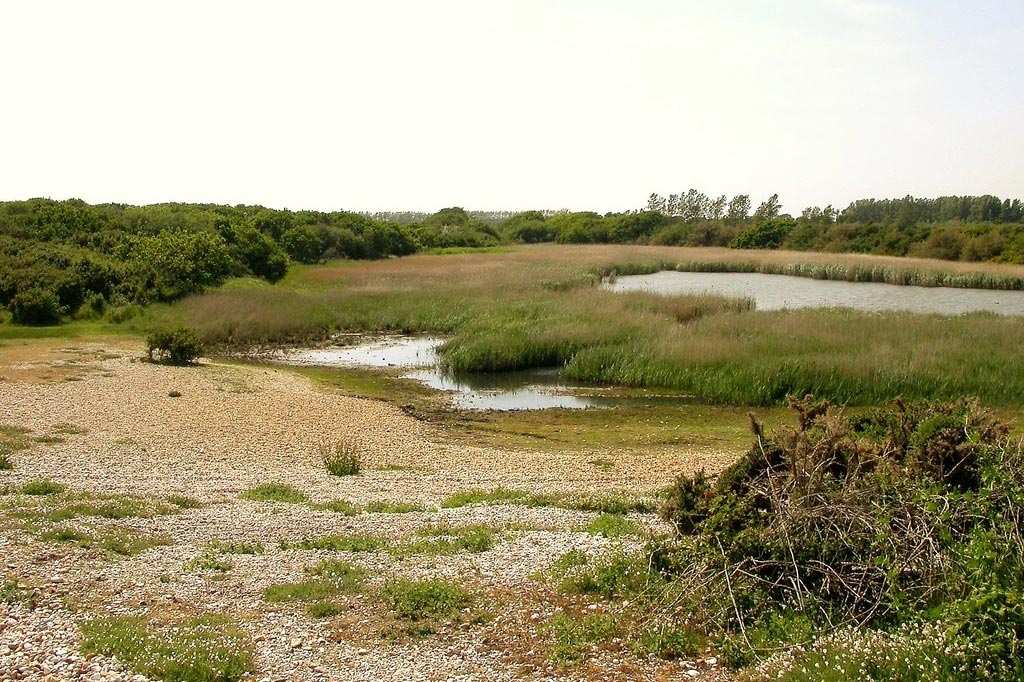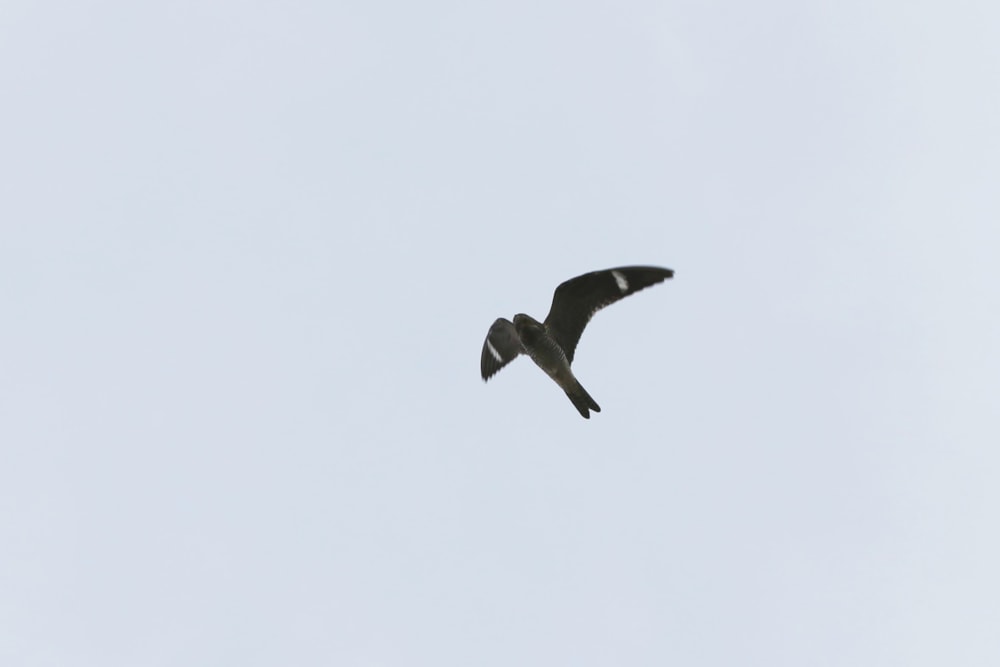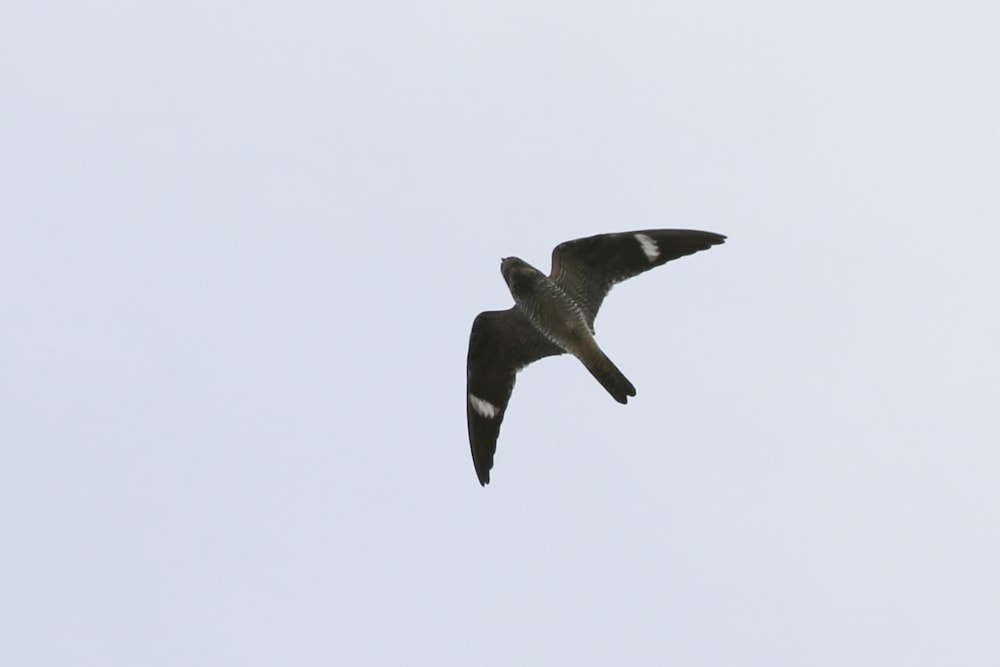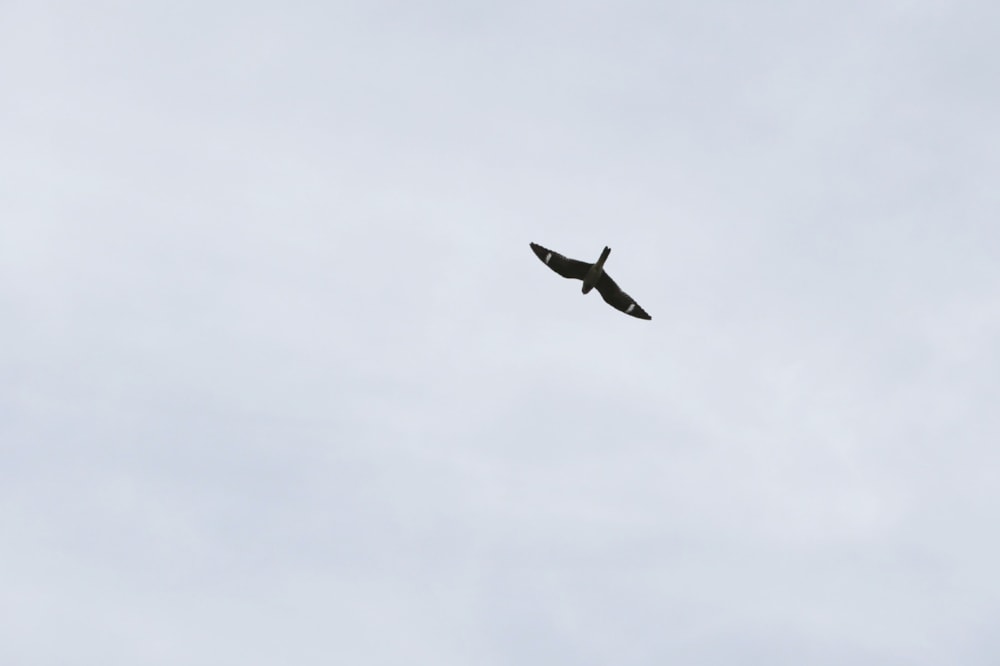As the Rector of Selsey, West Sussex, I am very blessed to have Church Norton in my parish. Situated on the edge of Pagham Harbour NR, this important historical site is also a great place for birding.
Sadly, recent storms had caused some damage in my churchyard and I had been on site to check on a fallen tree. Once finished I decided to take a short walk along the 'Severals', or reedbeds, which run parallel with the beach. It was here that I had found a Lapland Bunting a few weeks earlier, with the area occasionally producing Western Marsh Harriers and Barn Owls.

The Severals are a series of wildlife-rich lagoons, reedbeds and scrub at Church Norton, and form part of Andy's patch (Patrick Roper / geograph.org).
Not finding anything this time, I turned back and dropped down onto the beach. Just a few days ago I had seen my first Red-throated Diver of the autumn offshore. The tide was on the way out and there seemed to be few birds about. However, something caused me to look up and I saw what at first appeared to be a falcon heading towards me.
It was silhouetted against the sky, but I could make out the long wing beats. Thinking it to be one of the local Peregrines I lifted my camera to take a few photos. As I did so I could clearly see white flashes on the bird's long wings. I immediately assumed it to be a European Nightjar, a bird I had seen many times before just a few miles away. I took a few more photos as it passed directly overhead before it turned inland, heading for Norton Wood at the back of the Severals. I walked up the shingle to follow its progress through my binoculars until it dropped down into a group of dead trees behind the old horse field. Once in the trees it was lost from view.

Andy snatched a few shots as the 'nightjar' passed overhead from the beach towards the Severals, before being lost to view (Andy Wilkes).
I decided to put the message out to our local birding group that a nightjar had just dropped in. Looking at my mobile phone I could see that it had very little battery charge left, and I could barely read the dark screen to type the letters. I decided to head home to check my photos on my computer. Back at the car park, and with my glasses on, I could just about read a message asking if I had any photos – I was able to reply that I did and that I was heading home to check them.
As I drove the two miles back to the rectory, I started to wonder if it had been just an 'ordinary' nightjar. What else could it be? Back at my computer and with my Collins Guide to hand I noticed straight away the forked tail, the throat marks and the barred belly. As I stared at my photos and compared them with the book, I knew exactly what it was – a Common Nighthawk!

The forked tail and barred belly were among features that made Andy realise he had seen a Common Nighthawk on his patch (Andy Wilkes).
I walked slowly into the kitchen with my face in my hands and told my wife that I might just have found a rare American bird, a mega! Quickly downloading a couple of photos, I sent them to the local group asking if this was in fact a nighthawk. Quickly messages started to come back with a positive response – more experienced birders than me were happy with my ID. I then quickly posted a few photos on Twitter, to get the news out, before heading back down to Church Norton.
Back at the Severals, six of us scanned the woods in the fading light for any sign. Then someone shouted that they could see it! Sure enough, the nighthawk was flying around, first at a distance over the woods and then much closer over the Severals. We watched in awe as it danced and dived, flitting about with those long, erratic wing beats. It even doubled back and flew directly over our heads, much to the delight of everyone present. It then moved off heading towards the harbour entrance.
Some dodgy film footage of the Church Norton Common Nighthawk and some very happy birders! @SelseyBirder pic.twitter.com/hQPYm3fGWu
— Andy Wilkes (@Fr_AWilkes) October 8, 2020
As a few more birders started to arrive I decided to head home, still shaking from all the excitement. I was glad that a few other birders got to share that excitement, too. I think my experience once again demonstrates the value of patch birding – having a patch that one can walk regularly throughout the year, through the changing seasons and in all weathers, sometimes pays off. I have found many interesting birds over the last few years, such as European Bee-eater, Golden Oriole, Pallid Swift (a first for Sussex), Black Tern, Red-necked Grebe and, more recently, Lapland Bunting and Yellow-browed Warbler – all on my patch at Church Norton.
And, of course, we occasionally get the big ones, like both Elegant and Royal Terns in recent summers. Birds happen, and you never quite know what you are going to find. The Common Nighthawk is my first self-found mega and I have learned much from the amazing experience. The scientific name, Chordeiles, means 'evening dancer' – and what a wonderful sight it was. The nighthawk was also a life tick for me, and I definitely know to be looking out for that forked tail if I ever see anything like it again.




